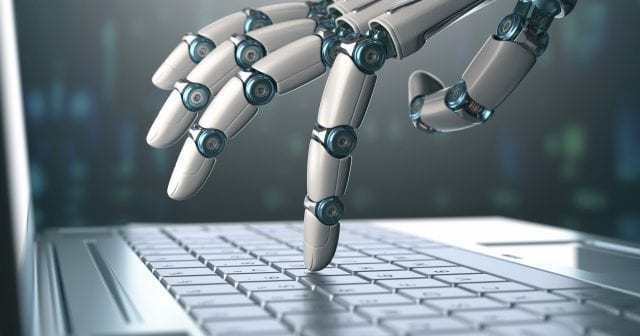
Canon Inc, the struggling Japanese camera manufacturer, has joined the ever growing list of global corporations that have taken sides in the war between man and machine. Like most of those before it, Canon and its executives have sided with the robots. The company announced last week that it was eliminating all human beings in its assembly line and replacing them with robots. Also like the corporations it now joins, company officials attempted to claim there would be no net loss in jobs.
It’s the 21st century version of trickle-down economics. And time after time, the economic theory is proven false. But in a world where the only way to succeed is to destroy the setting that allowed you to prosper, Canon is not unique. The transformation has been going on for a quarter-century and the Japanese, out of necessity, have perfected it.
Here’s what the world’s new state of manufacturing looks like:
- Corporations in developed nations discover a way to cut costs and undercut their competition. They consolidate, buying up their competitors and laying off their workers, until there are only a small handful of companies left where there were once hundreds or thousands.
- Faced with a competitor who has a distinct pricing advantage due to their large size and purchasing power, the remaining corporations discover a way to beat their monopolistic competition. They lay off their workers in developed nations and move manufacturing to third world countries where slavery and indentured servitude are legal.
- Realizing that they must still feed, clothe and house their indentured workers, corporations discover a way to eliminate the cost of human beings all together. They replace their human workers with robots.
Canon’s strategy

Like Toyota, Honda and hundreds of Japanese, US and European corporations, Canon has entered that final phase of their corporate life. They will lay off almost all of their human workers and replace them with robots. In an interview with Associated Press, Canon spokesman Jun Misumi explained the company’s switch to humanoid workers instead of humans.
Misumi insists the company is being forced to cut costs in order to stay competitive with other corporations that have moved their manufacturing to places like China and India. There, with no enforcement of worker protections or human rights, corporations are free to exploit child labor, slave labor, or near-slave labor. As far as the widespread warning that eliminating human workers will add to an already disappearing jobs base, Misumi assures critics that no jobs will be lost in the end, “When machines become more sophisticated, human beings can be transferred to do new kinds of work.”
What “news kinds of work”?
That was the same argument former US President George Bush made when he informed America that the GOP was going to transform the US from a “manufacturing-based economy to a service-based economy.” With support from leading Democrats, a bi-partisan effort was made to ship millions of American manufacturing jobs to countries with slave labor or no child labor laws. With few labor costs, corporate profits soared and those trillions of dollars in additional profits were supposed to “trickle down” to the workers who no longer had jobs. But it never happened. And critics warn that it won’t happen in Japan either.
Amazon.com

The AP report goes on to describe how the trend away from human workers is only gaining steam. Amazon Inc, one of the largest and most profitable companies in the US, is not only a practitioner of using robots instead of humans, the company is positioning itself to be the supplier of robot workforces for the rest of the world. Amazon recently purchased Kiva Systems for $775 million. The company specializes in designing and building robots that can pick and pack orders in a warehouse setting.
With more and more global corporations eliminating their human labor force, one must ask, ‘where is humanity supposed to work?’ Already, millions of jobs have been lost to robots in the US alone and the labor force has yet to recover. With an oversupply of desperate workers who can’t find jobs, pay rates have actually fallen over the past decades when adjusted for inflation, while the cost of living has skyrocketed.
Does the robot economy actually work?
For trickle-down economics and the robot economy to work, the richest 10 percent of mankind must do the spending of 20 average people everyday. By capturing and controlling the disposable income of the bottom 90 percent, the super rich are required to perform the spending of 10 people, including themselves. So, if that 10 percent does the purchasing of 10 people, plus their own which is the equivalent of 10 average people, that totals 20.
And that’s why trickle-down economics doesn’t work. Even super wealthy people don’t live in 20 houses or drive 20 cars everyday. They don’t go out for dinner 20 times a day or send their 20 children to 20 schools. They don’t pay to have their lawns mowed or their nails done 20 times per week. The other fatal flaw in the Republican economic theory is that even if the super rich did go to the grocery store 20 times per day, having 20 times the necessary food in a mansion in Beverly Hills does nothing to feed the 20 average Americans its being purchased on behalf of.
That’s not to say that the only alternative Americans have been given is any better. A labor-based economy where tens of millions of people pound rocks with sledgehammers for minimum wage just to give them something to do for a government-sponsored paycheck, isn’t any more appealing. That dependence on a government patron only leads to tyranny and slavery. But the world didn’t make a hard left turn in recent years, it made a hard right turn. The corporate-run robot economy is upon us.
Unfortunately, in a robot economy, the only ones who win are the wealthy investors whose profits soar, the corporate executives paid to oversee the robot workforce, and the companies whose robots make the robots. Everybody else loses. For those that have seen the movie series Terminator with Arnold Schwarzenegger, the world may be on a bullet train to a similar reality.





